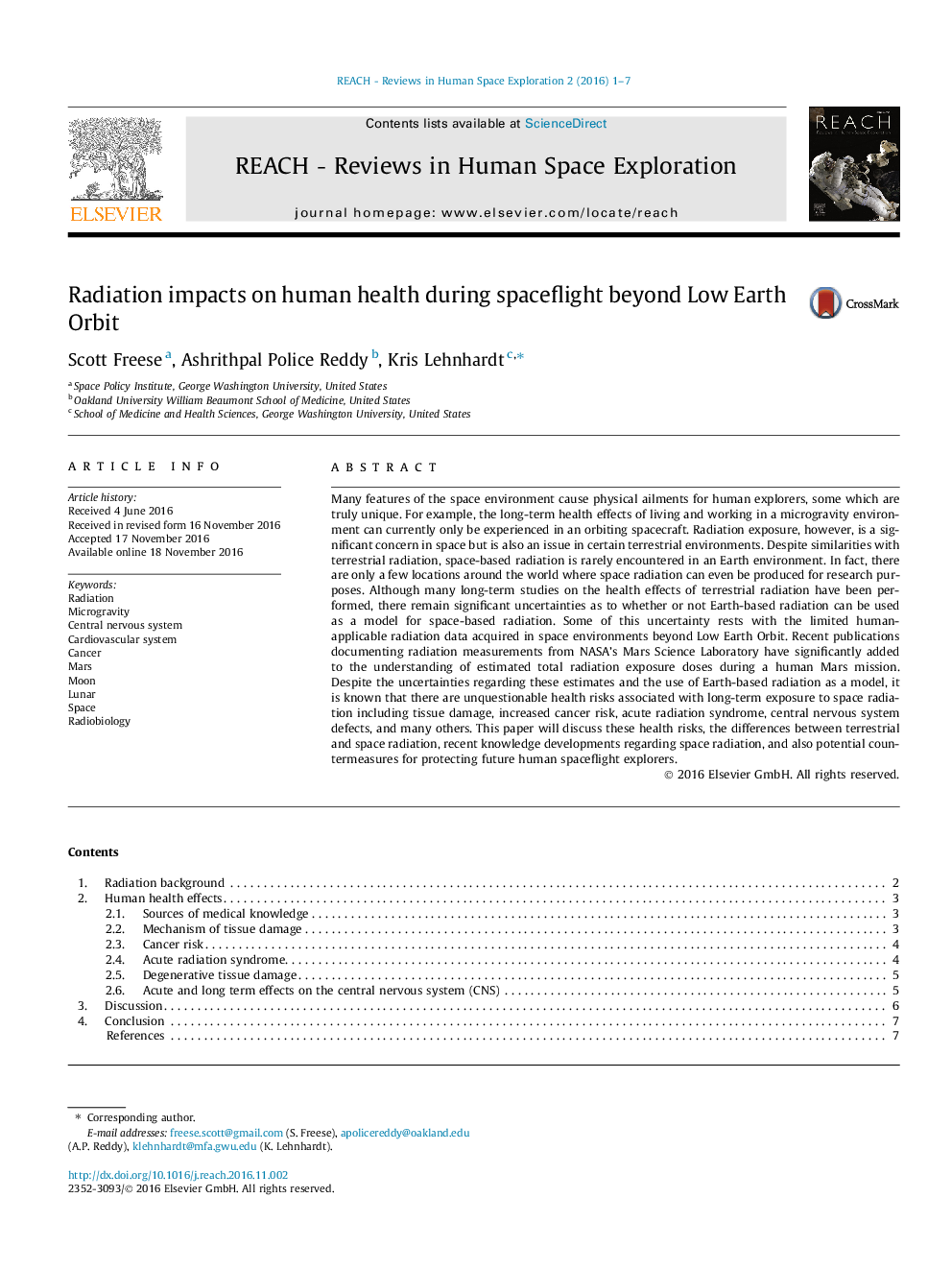| Article ID | Journal | Published Year | Pages | File Type |
|---|---|---|---|---|
| 5497466 | REACH - Reviews in Human Space Exploration | 2016 | 7 Pages |
Abstract
Many features of the space environment cause physical ailments for human explorers, some which are truly unique. For example, the long-term health effects of living and working in a microgravity environment can currently only be experienced in an orbiting spacecraft. Radiation exposure, however, is a significant concern in space but is also an issue in certain terrestrial environments. Despite similarities with terrestrial radiation, space-based radiation is rarely encountered in an Earth environment. In fact, there are only a few locations around the world where space radiation can even be produced for research purposes. Although many long-term studies on the health effects of terrestrial radiation have been performed, there remain significant uncertainties as to whether or not Earth-based radiation can be used as a model for space-based radiation. Some of this uncertainty rests with the limited human-applicable radiation data acquired in space environments beyond Low Earth Orbit. Recent publications documenting radiation measurements from NASA's Mars Science Laboratory have significantly added to the understanding of estimated total radiation exposure doses during a human Mars mission. Despite the uncertainties regarding these estimates and the use of Earth-based radiation as a model, it is known that there are unquestionable health risks associated with long-term exposure to space radiation including tissue damage, increased cancer risk, acute radiation syndrome, central nervous system defects, and many others. This paper will discuss these health risks, the differences between terrestrial and space radiation, recent knowledge developments regarding space radiation, and also potential countermeasures for protecting future human spaceflight explorers.
Keywords
Related Topics
Physical Sciences and Engineering
Physics and Astronomy
Physics and Astronomy (General)
Authors
Scott Freese, Ashrithpal Police Reddy, Kris Lehnhardt,
